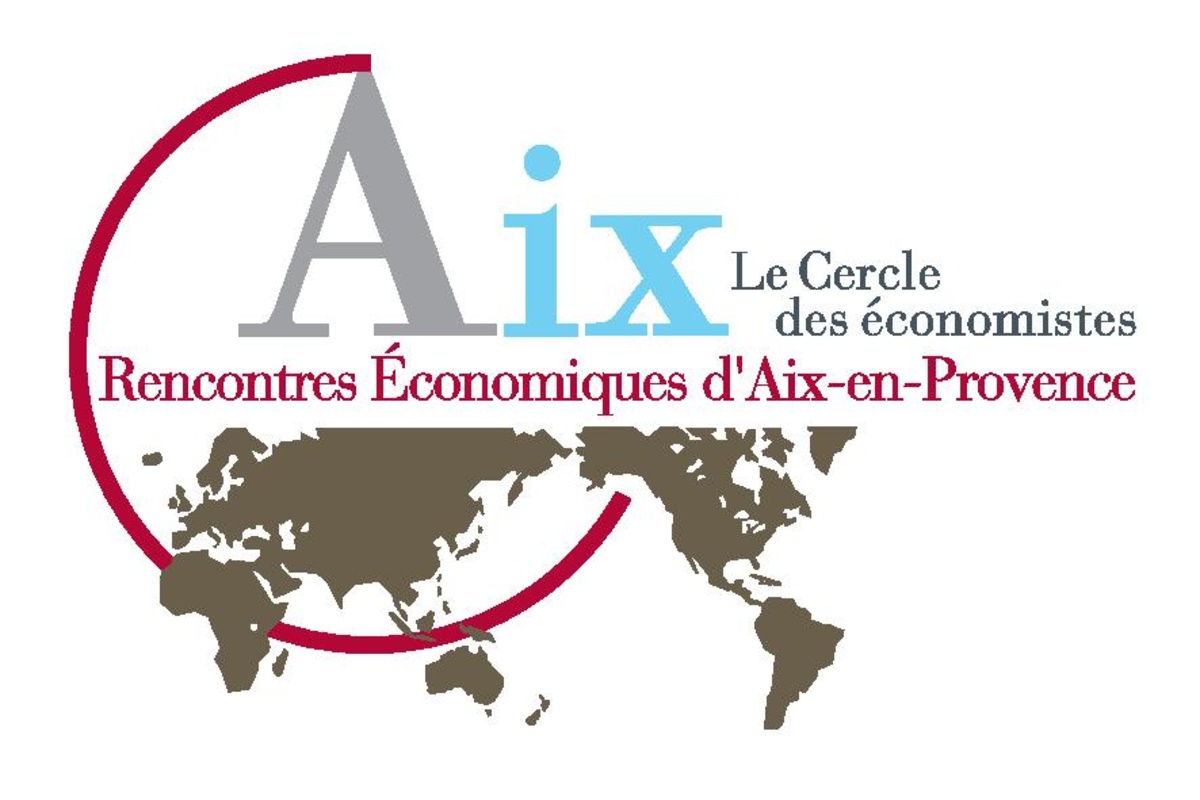During the second round-table a debate was led by Benoît Floc’h, a journalist at Le Monde, between Philippe Aghion, Professor at the Collège de France, Laurent Batsch, President at the Université Paris-Dauphine and Olivier Klein, Professor of Economics and Finance at HEC and Chief Executive Officer of BRED.
Benoît Floc’h :
Mr Aghion, how can a university be a driving force for innovation and what is its role?
Philippe Aghion :
Rather than catching up with technology, innovation is a driving force for growth. To produce leading edge innovation, what I call frontier innovation, we must generate knowledge. Silicon Valley is close to Stanford, route 128 being close to Harvard MIT, which is not by chance. Innovation is also synonymous with creative destruction. Ceaselessly, new ideas, new activities and new jobs replace the old. So, we must organise job mobility that offers qualifications and generates a dynamic employment market. Universities can play a central role in generating knowledge and promoting job mobility that culminates in qualifications.
First of all, in research, there are various rankings, various ways of assessing the performance of universities, for example the ranking of Shanghai, of Times, of diplomas – but all are valid. The countries and universities which succeed and excel in research, call on three vital levers.
First, resources – money. The United States spends $35,000 per student/annum, Scandinavia €25,000 per student/annum, but France just €9,000. And although the grandes écoles are rich, French universities are poor.
Secondly, governance of universities, and more specifically their independence constitutes a major factor for success. Universities must be able to set their own budgets and human resources policy. Those which work well have both an academic Senate, composed of professors who advise the Chair and an external “board” which meets regularly, bringing together lecturers from other universities and local personalities. These boards appoint the Chair, follow up the budget, etc.
Thirdly, it is vital to take advantage of research incentives, for example ANR (Agence Nationale de la Recherche) which finances project-based research). Emulation of this initiative must be encouraged to obtain bursaries, which stimulate excellence and enhance the quality of research.
Then two factors for mobility can be identified. In the first place, universities have a role in training teachers because, to generate mobility, students must receive a good education at both primary, secondary and undergraduate level. Secondly, we must make sure that on leaving university, students find long-term jobs which meet their expectations. Unemployment rates and the proportion of fixed term employment contracts are also indicators of job satisfaction. Universities which have the means can properly equip their students to join the professional world.
Finally, there are three significant concepts we currently ignore. First, we must offer a second chance. Failing a competitive exam should not set the scene for the rest of someone’s life. There is a need for increased diversity and flexibility in study programmes. Universities should also offer professional and general training aligned with that of the grandes écoles. There must be bridges from one to the other, in both directions and at several levels.
A second concept to introduce is progressive specialisation. In the United States and other countries, rather than immediately opting for a specialism, the choice is made progressively. Students opt for a main subject, but this may change en route. This system does not create more selection by failure, but a more gradual specialisation and improved results.
Finally, informing students on programmes and outlets is of prime importance. They must be properly informed on the worth and the standard of university teaching staff. And university lecturers and professors must be assessed – so they can improve.
These are major revolutions that should be implemented at universities to achieve excellence in terms of professional integration.
Excellence is not uniform, we need excellence in research but also in professional integration. These two aspects create growth through innovation. And growth through innovation generates social mobility. Universities which operate according to this model would generate inclusive growth.
Benoît Floc’h :
Thank you very much Mr Aghion. I am now going to hand over to Mr Batsch.
So the university can play this role in the economy, it must meet a certain number of challenges. One of the points you frequently emphasise is that the system should be freed from its chains. What do you mean by that and how far should liberation of the system go?
Laurent Batsch :
To illustrate how the system could be freed up, I am going to use two examples which demonstrate we could change to the LMD (Licence – Master – Doctorate) system, more than 20 years after Bologne.
First example, the masters. Recourse to administrative courts, opinion of the Council of State etc. The decision was made without any surprise and selection is not authorised either on entry to a Masters or between the first and second year. These are the legal texts. Political reaction: to secure what exists, with a decree which authorises retaining selection between the first and second year. In other words, we are now immobilising an academic cursus which is already rigid, as two separate years. This is inconsistent for students who must step onto the conveyor belt without any indication of whether they will be able to get off. The only reason for this situation is to avoid selective entry to a Masters in the first year: a very simple restriction which is regulatory.
Benoît Floc’h :
But entry is frequently selective? Many establishments are selective, it seems to me.
Laurent Batsch :
Selection exists de facto, but it’s illegal, both on entry and during the course. Since we don’t want to adopt a text which establishes selection for entry to a Masters, we are retaining a situation in which the Masters is divided into two parts, with the selection process deferred until mid-way through the programme. This restriction is politically imposed and so extremely easy to lift.
Benoît Floc’h :
Surely there is a contradiction between the desires to ensure 60% of a generation follow a higher education course while imposing selection?
Laurent Batsch :
We can accommodate a large number of students in a two year Master programme, if they have been prepared. The contradiction resides in the will to raise the general level of qualifications while “stopping the momentum” of students in the middle of their Masters diploma.
But I will respond to your questions with a second very interesting example, the Undergraduate Degree. It is not selective. There is a 92% success rate in the General Baccalaureate and the first grade of university study, entry to university is today offered to almost any student in the final year of secondary school.
But today, through preparatory classes, STS, IUT, 450,000 students are undertaking a Bac + 2 years course of extra studies. We have a system of degrees requiring an initial Bac + 3 years’ study. Why not recognise preparatory classes as two years of study towards an undergraduate degree? This would create a three year cycle ensuring that final year college students who take preparatory classes are not only preparing for competitive exams but also, working towards completion of a full programme. The only reason why this system is maintained is that preparatory classes are selective.
Why are there now IUT or DUT awarded after 2 years without establishing any equivalence with the curses of a university technology undergraduate programme in the LMD system? The only reason is that we don’t want selective entry for undergraduate degree. This is another regulatory impediment which constitute a blockage, a mental taboo.
It prevents the development of consistent qualifying 3 year programmes. The main victims are students, mostly those with a technological baccalaureate who are swallowed up by the university system. 6 out of 10 students do not obtain an undergraduate degree in 3 years and are offered no second chance. So, I am proposing that, on the basis of the 2 years training for a DUT, there should be a consistent, 3 year programme which prepares students for middle management positions. This is a common sense idea, endorsed by all – but which is not applied for two reasons. First of all, because the IUTs are selective, which means the undergraduate degree would also have to be selective and also very attractive. What is more, such an undergraduate degree, leading to a job at the end of the programme, would not automatically give entry to a Masters. So students wishing to study for a Masters would be recruited according to certain preconditions.
These barriers are also very simple to remove for the construction of a consistent study programme to which students could commit in the knowledge that they would be able to complete it.
A technological undergraduate degree, oriented towards employment would open up a new social pathway to success for students who are currently victims of the social centrifuge. But we don’t adopt this policy because of taboos we cannot overcome.
A final example is the absence of selection for university. In many universities there is limited capacity for undergraduate study. Students who apply for a certain highly-demand sector are drawn at random. This is an extreme form of social democracy – dividing students at random. There is a one in two chance of selecting a student of average ability with little motivation over a student who is far more motivated. This is totally absurd.
And I will conclude by stating that excellent networks, in particular undergraduate degrees, are semi-clandestine. That means you prevent certain establishments from exploiting their networks of excellence, from placing them centre-stage as internal driving forces and external forces of attraction.
We are harming both students and institutions, whereas it would suffice to remove these two regulatory barriers which are raised by purely intellectual blockages.
Benoît Floc’h :
I am going to ask you to say more about selection. For schools, Scandinavian countries – which do not practice selection – are ranked highest in PISA surveys. Inclusive teaching for all children is therefore a factor for success. Why are things different in higher education? And surely accommodating the less gifted and the best offers everyone a chance to progress together?
Laurent Batsch :
This is precisely what I am proposing…
Benoît Floc’h :
No, if you impose selection, you exclude the less gifted.
Laurent Batsch :
You cannot compare selection with cherry-picking. To express this another way, I mean there must be preconditions for one or other course of training. What I am proposing is not selection which excludes, but orientation along diverse new pathways to ensure the success and promotion of members of society who are today victims of what I call the “social centrifuge”.
The second response is the belief that higher education cannot be compared to that of school education and that not everyone can become a profession of mathematics – a standard reserved to only certain types of student. That is not social democracy and equality of opportunity.
We must not be overly naïve: children from all environments like to be stimulated. Children from so-called “difficult” environments appreciate others placing expectations on them from a young age. They like competition and we must offer it to them – because they can succeed.
It is not simply by eliminating all demands that we will achieve social democracy. Social democracy means being demanding with children in the fields in which they have as much chance of success as others, which is not exactly the same thing.
Benoît Floc’h :
I will now hand over to Mr Olivier Klein, Professor of Economics and Finance at HEC and Chief Executive Officer of BRED. You also have identified failings in the French educational system and urge us to be inspired by systems abroad to improve. Is that the case?
Olivier Klein :
Yes, absolutely. First of all, I think we all acknowledge the considerable importance of education and higher education. I am going to paraphrase my friend Philippe Aghion: in an economy which has moved from a catch-up phase to one of innovation, higher education must be the focus of investment because it is a vector for the transfer and enhancement of knowledge.
Today, although French universities have made progress in the last 20 years, all higher education in France is still struggling with inefficiency which must be tackled head-on. We must free ourselves of our intellectual blockages and move from talking to action.
A first criterion to be considered is the level of our PISA and PIAAC scores, which respectively assess the adaptation and standard of students undergoing training and their qualification for work. Our scores are average. A result which is not shameful, but scarcely an advantage in terms of international competition. In France, pay is on average, higher, so we must create more added value to justify this. We can achieve that goal by improving our PISA and PIAAC scores.
Then, unlike many other European countries, our social mobility, that is equality of opportunity, already average, has reduced over the last 10 years. This is measured by the correlation between the standard of education or revenue of parents and that of their children. Unfortunately this correlation is rising only slowly in France – evidence of reduced social mobility.
We cannot accept a system in which equality of opportunity is falling because social mobility creates a dynamic society. It mobilises resources, the best skills, etc. Equality of opportunity also constructs social cohesion, so it’s fundamental.
Sometimes we criticise the ranking of universities, world-class institutions, but these rankings exist. It’s a fact and people look at the rankings and the top universities attract the world’s elite and of course the lower-ranked establishments are less attractive. In terms of higher education establishments, France is not well placed compared with other European countries. Of the 200 best higher education establishments in the world, the United Kingdom has 34, Germany 20, the Netherlands 12, Australia (with 22 million inhabitants) 8, Canada 7, Switzerland also 7, Sweden 6 and France only 5, just ahead of South Korea.
The first effective measure would be to end premature specialisation. In France, in the final year of secondary school, students don’t necessarily know whether they want to study economics, law or medicine. French universities begin with specialisation. In many other countries studies begin with one or two more general years with later specialisation, once the student has explored several areas. In my view, this promotes pertinent orientation and reduces the risk of failure.
The second point is a very sensitive subject causing a significant intellectual blockage in France: selection. Selection means we must examine how best to orient students to reduce failure to a minimum. In France, the solution of selection by failure is widespread. More than one out of two students drop out before their second year at university. Sometimes only fifteen percent of students of a promotion enter their second year of university study. In addition, as Laurent Batsch pointed out, students enter a Masters year 1, but true selection is only on entry to the Master’s year 2. What happens to the students who are not selected? The system is not logical and indicates a problem.
There is an astonishing paradox in France, we reject selection at the universities, but the IUT and BTS are both selective. And businesses like this type of course. The grandes écoles are also selective and companies recruit other categories of employees from them. This is not healthy because selection occurs also in universities, but it’s concealed and once again, most frequently by failure and exclusion.
What’s more, this is not fair. Frequently a university has the best professors, remarkable teachers, just like the grandes écoles. Except that in the professional sector, there is an asymmetry of information between the employee and employer. It is easier for the employee to obtain information on an enterprise than for an employer to know who it is recruiting. To save time, the employer selects applicants on the basis of their academic cursus. So, for more certainty, why not simple select those applicants who were selected when starting their higher education? Of course, after recruitment, an employer can judge for itself if the person is competent. But there is less chance of a mistake with those who have been preselected.
Hence the importance of positive selection which, rather than excluding, gradually orients students towards the right programme. And we must accept that ultimately this allows including all those who wish to be included in the knowledge that not everyone wants to become a nuclear physics research scientist, for example.
Competition and complementarity between the universities operates well in many other countries. Holding a competition is intelligent since it incites students to improve and seek to achieve excellence. It also allows integration by differentiation. Competition results in the less well-endowed and less sought=after universities becoming more inventive so they stand out and adapt to their own specific fields. Absolute uniformity and equality between universities is a myth. Everyone knows, notably employers, that it’s preferable to select students from a particular university or a particular specialised Master, rather than another less valued one. So, an intelligent review is required of cooperation and competition between universities.
I also believe that academic staff should be assessed transparently, by their students. This serves as definite incentive to become a good teacher – always calling oneself into question. There should be pride in teaching well. This is done abroad. It’s done in the Grandes Écoles. It offers an undeniable advantage to the students and raises the standard of teaching.
A highly effective approach abroad is the option of joining the professional world after a few years of study, then returning to an academic programme to evolve in another area or to enhance knowledge in the same field. These students are far more decisive and highly motivated. This system keeps people in the educational loop unlike the French system – and this must change.
To end, I believe that French universities haves never really focussed on professional training. On the contrary, many grandes écoles do precisely this. Professional training requires teachers that remain part of the professional world. This brings universities and the world of work closer together and demonstrates the requirements and evolutions. It also strengthens the relations between universities and the professional world, so it becomes easier to place students in the job market. This connection is missing today, whereas the grandes écoles are very successful in forming such links.
Universities have considerable advantages and some outstanding teachers – but we must give them a chance to perform to the best of their abilities.
Benoît Floc’h :
Should more emphasis be placed on competence rather than knowledge? Should university assessments evolve towards checking that students have the right skills to enter the job market, rather than abstract knowledge, which is pointless without the contemporaneous development of skills?
Question from a student :
Yes, because we are confronted by employers whose expectations are highly specific.
Olivier Klein :
From my point of view, the good universities and the good schools inevitably create a mix. In fact, if they restrict themselves to academic study, detached from the entrepreneurial world, they will produce only researchers. Obviously the number of academic research staff required is small compared with that of students destined to work in businesses. Hence, establishments must orient their programmes to satisfy current needs.
At the same time, the best universities and the best grandes écoles avoid restricting themselves to a short-term vision. They offer knowledge, understanding and intellectual methodologies so that students, once they join the world of work, can evolve in the long term, with more success than those who have learned short term “by rote”.
I believe excellence derives from the ability to push out the boundaries and an ability to reason in the long term. Of course, the écoles, the universities, must not be disconnected from the world as it exists. They must be a correspondence between theoretical teaching and reality. But we cannot propose learning only concepts which are immediately useful to business. We need the right mix of both.
Question of a student :
I am a student, doing a double law and economics degree at Université Paris 10 – Nanterre. I would like to return to the question you were asked about knowledge and competence. You said that training given in universities is not purely theoretical but creates the ability to reason. My question will this be sufficient? Today, the main difference between the grandes écoles and the universities is the fact that the écoles mostly have partnerships with key enterprises, with universities abroad which creates mobility. This makes their training programmes more attractive from an employer’s perspective. I would like to hear your opinion, Mr Klein.
Olivier Klein :
That’s correct. But at the same time universities have set up Masters, some with a very good reputation and of high standard taught by academic research staff and others engaged in the world of business. This has brought the world of work inside such establishments. Of course, if the university programme provided for a mandatory intern year to test knowledge of the world of work, this would certainly be positive. As would offering far more exchanges with businesses and institutions abroad. This would considerably enhance the attractiveness of students on courses for employers.
To conclude, inclusive growth does not mean rejecting constructive selection, but rather rejecting exclusion by failure, as happens today. And if there is selection, it must not be purely on the basis of mathematics, as emphasised by a student, but also on desire, motivation and personal interest expressed. This should count as much as knowledge and the ability to reason.





